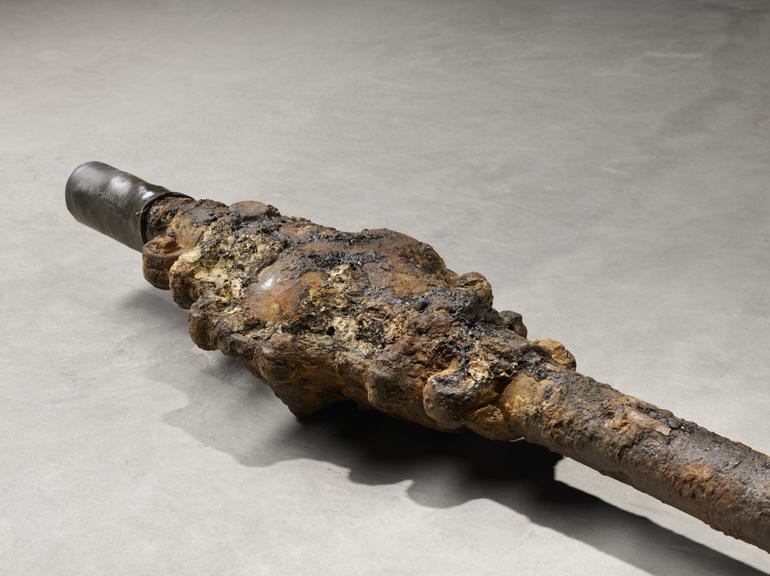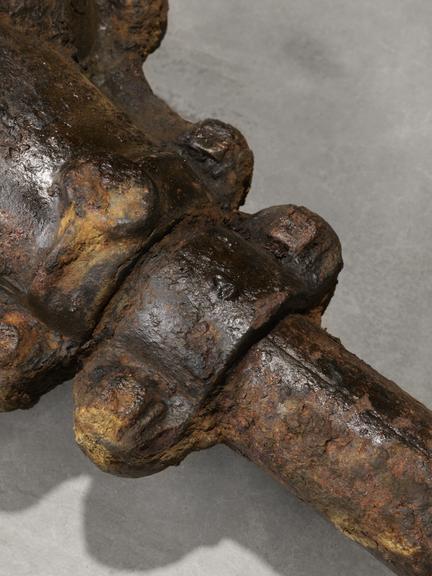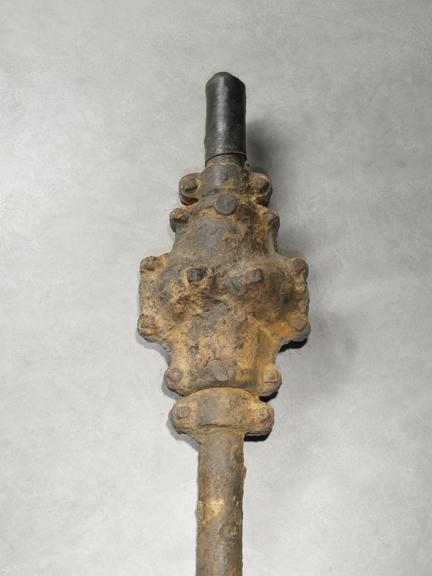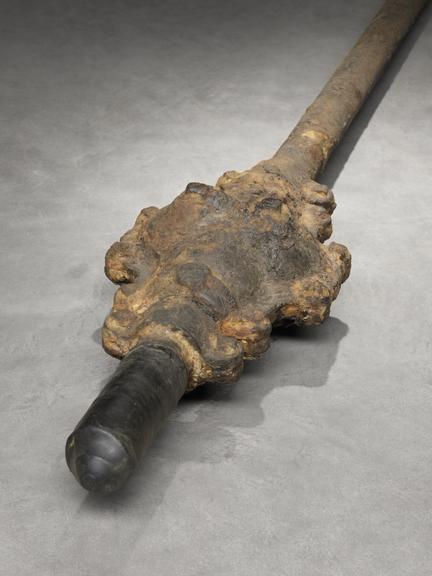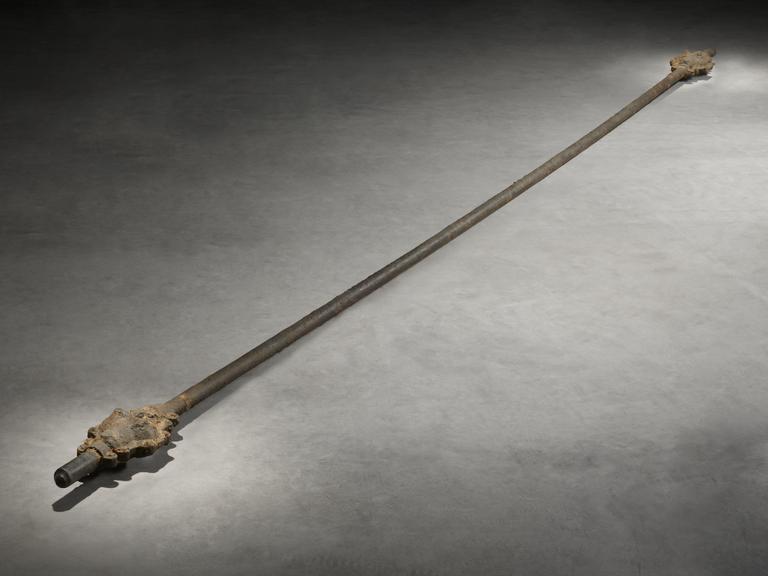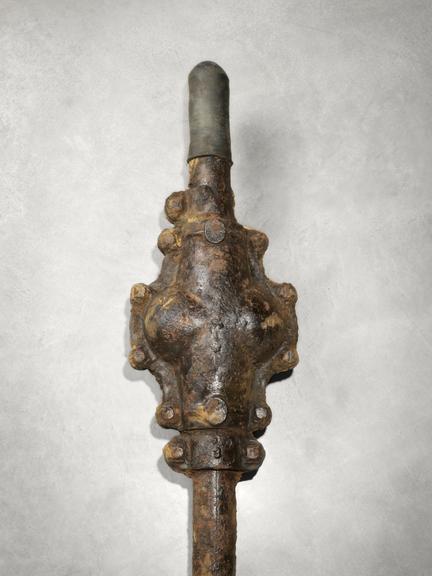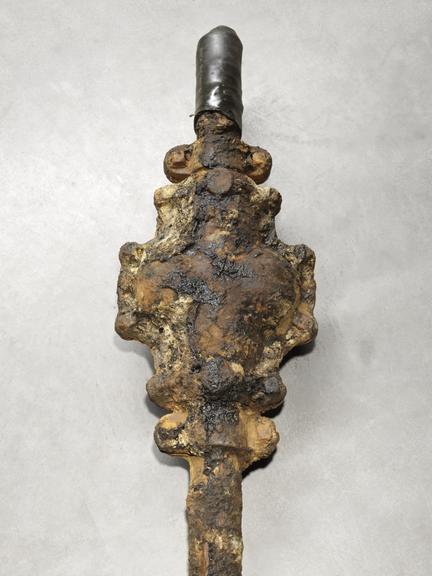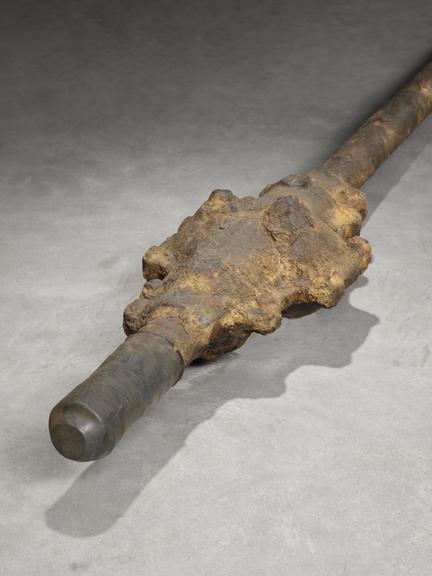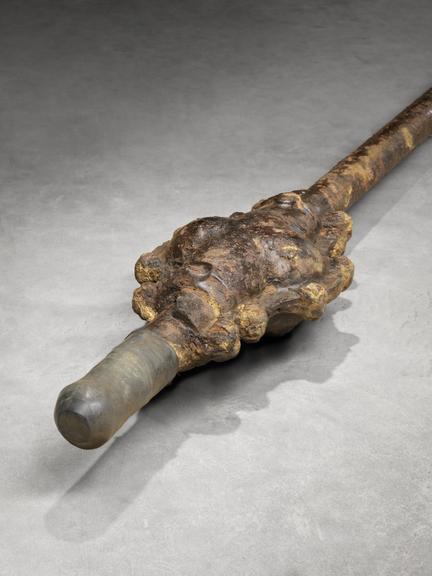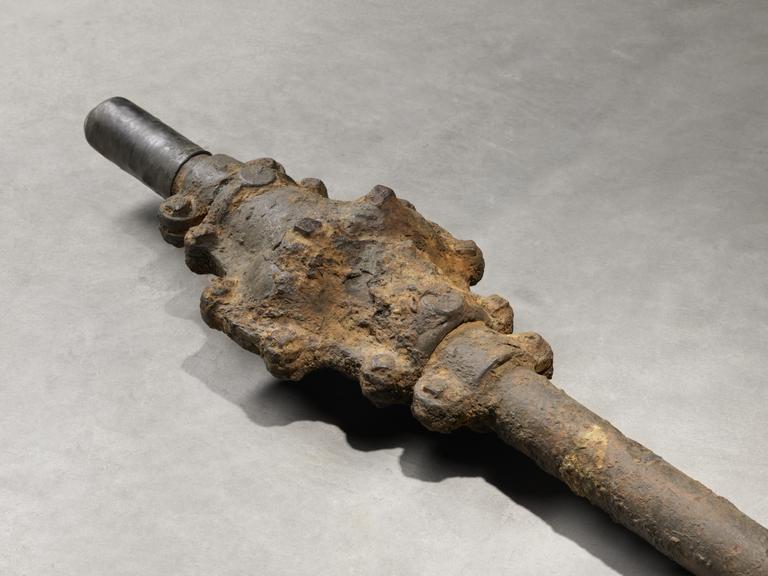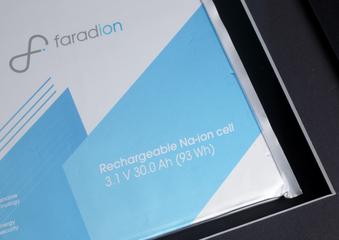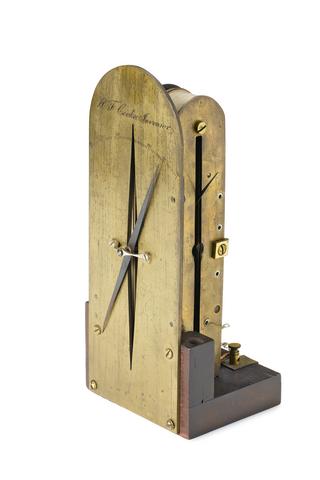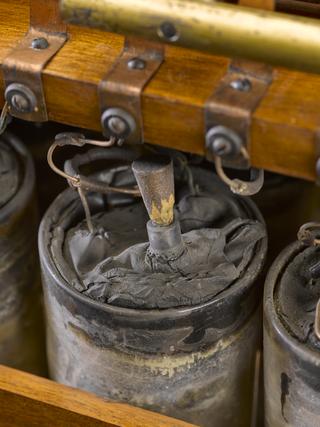Two-Core Edison Tube
Two-core Edison Tube, full length (20ft) uncut, with junction boxes at either end and short cut tubes on the outer ends, by Edison Electric Tube Company, New York, 1882. Used to supply electricity for lighting the Queensland Parliamentary buildings in Brisbane, Australia from 1884.
More
Two-core Edison tubes are electric mains cables. They were the type of cables used for the first commercial underground installation of electricity supply in the world, at Holborn Viaduct, London, in January 1882.
Invented by Thomas Edison in 1881, the tubes consist of two semi-circular copper rods, held in position by perforated cardboard pieces, bathed in an insulating bituminous mixture, enclosed in rigid wrought iron tubes. The tubes are wrapped in strips of tarred ribbon to prevent the iron from oxidising.
Edison tubes were made in lengths of 20ft and connected to each other by junction boxes. They were of such a length that they could be transported around the average street corner on a horse-drawn cart.
After their first use at Holborn Viaduct in January 1882, two-core Edison tubes were installed in Pearl Street in New York in September 1882, before being adopted in Milan and Berlin. From May 1884, 410 metres of Edison Tube were installed under William Street in Brisbane, Australia, to light the Queensland Parliamentary buildings.
Were these cables sent directly from the USA (where they were made), or were they sent to London for the Holborn Viaduct installation and then later forwarded on to Brisbane? There is evidence, in the form of an invoice, that these were sent from Edison’s London agents to the Government of Queensland, so were most likely surplus equipment of the same batch as the original and first installation in the world.
In use regularly from 1886, the two-core Edison tubes were supplemented by three-core tubes, being used to supply electricity to the Parliament buildings until about 1906, when the whole system was converted to a three-wire system. For 96 years they lay buried and forgotten, until they were rediscovered by Queensland Museum in 1992. Small parts of the mains, junction boxes and 90° elbow joints were recovered, but no full-length tubes.
In February 2018 (134 years after they were laid), half of the full 20ft length tubes were recovered from under William Street to make may for a new commercial development. Being an original length of the oldest intact urban electrical infrastructure in existence, of the same stock as the first public supply of electricity anywhere in the world, the Science Museum immediately agreed to the offer of donation.
- Materials:
- iron , copper (metal) , pitch , oil (unspecified) and wax
- Object Number:
- 2020-205/1
- type:
- electrical cable
















